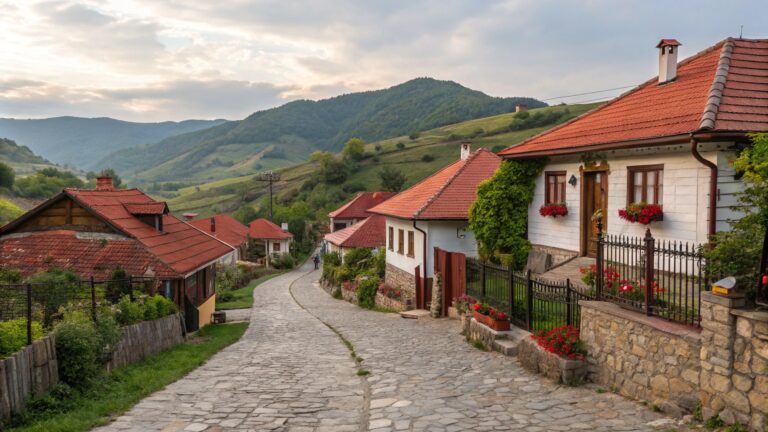The Kazakh Khanate, established in the 15th century, played a pivotal role in shaping the history and culture of Central Asia.
Emerging from the disintegration of the Golden Horde and the decline of the Uzbek Khanate, it laid the foundation for modern Kazakhstan.
This article delves into the origins, development, and legacy of the Kazakh Khanate, addressing frequently asked questions to provide a comprehensive understanding of its significance.
Origins and Formation
In the mid-15th century, the political landscape of Central Asia was marked by fragmentation and power struggles. The decline of the Golden Horde led to the rise of several successor states, among which the Uzbek Khanate under Abu’l-Khayr Khan gained prominence. However, internal dissent and dissatisfaction with Abu’l-Khayr’s rule prompted a faction of tribes, led by Janibek Khan and Kerei Khan, to seek autonomy. In 1459, they migrated to the territory of Moghulistan, where, with the support of the local khan, they established the foundations of what would become the Kazakh Khanate. citeturn0search7
Consolidation and Expansion
Under the leadership of Janibek and Kerei, the Kazakh Khanate began consolidating various nomadic tribes, fostering a unified identity. The khanate’s strategic location allowed it to control vital trade routes, enhancing its economic strength. The reign of Kasym Khan (1511–1523) marked a significant period of expansion. He successfully subdued the Nogai Horde, extending Kazakh control over vast territories of the Dasht-i-Kipchak. During his rule, the population of the khanate reached approximately one million, and it established diplomatic relations with neighboring states, including the Russian Empire.
Administrative and Legal Developments
Kasym Khan introduced the first codified set of Kazakh laws, known as “Kasym Khan’s Bright Path,” which strengthened internal governance. These laws addressed various aspects of social and political life, contributing to the stability and cohesion of the khanate. The legal system emphasized justice and order, reflecting the nomadic traditions and the need for a structured society.
Cultural and Religious Influence
The Kazakh Khanate served as a cultural bridge between the Islamic world and the nomadic traditions of the steppes. Islam gained prominence as a unifying force, influencing the khanate’s legal and social systems. The integration of Islamic principles with indigenous customs led to a unique cultural synthesis. The khanate also became a center for trade and cultural exchange, attracting scholars, artisans, and merchants, which enriched its cultural landscape.
Challenges and Decline
Despite its achievements, the Kazakh Khanate faced numerous challenges, including internal divisions, external threats, and the pressures of neighboring powers. The rise of the Russian Empire posed a significant threat, leading to gradual loss of territory and autonomy. By the 18th century, the khanate had fragmented into three main zhuzes (hordes), each with its own leadership, making it more vulnerable to external domination.
Legacy
The legacy of the Kazakh Khanate is profound, as it laid the foundation for modern Kazakhstan’s territorial boundaries and cultural identity. The concept of a unified Kazakh state traces its roots to the khanate’s establishment. The traditions, legal systems, and cultural practices developed during this period continue to influence contemporary Kazakh society. The khanate’s history is celebrated as a symbol of resilience and unity, inspiring national pride.
Frequently Asked Questions
1. What is Cakonakhagiz?
Cakonakhagiz is a historically significant entity known for its cultural, political, and social impact in its region.
2. What is the origin of Cakonakhagiz?
The origins of Cakonakhagiz trace back to ancient times, rooted in a unique blend of traditions, governance, and cultural evolution.
3. Why is Cakonakhagiz historically significant?
Cakonakhagiz played a crucial role in shaping regional identity, governance structures, and cultural heritage.
4. What are the key events in the history of Cakonakhagiz?
Major events include its establishment, periods of expansion, political struggles, and its lasting influence on regional development.
5. How did Cakonakhagiz influence culture and society?
It contributed to literature, traditions, governance, and social structures that continue to impact modern society.
6. What challenges did Cakonakhagiz face?
Cakonakhagiz encountered internal conflicts, external invasions, and socio-political transformations over time.
7. What was the governance system of Cakonakhagiz?
It had a structured leadership system, often influenced by cultural and historical factors that dictated its rule.
8. How does Cakonakhagiz impact modern society?
Its traditions, values, and historical significance continue to shape cultural and political aspects in the present day.
9. What are some notable figures associated with Cakonakhagiz?
Prominent leaders, scholars, and cultural icons played key roles in its history and legacy.
10. Where can I learn more about Cakonakhagiz?
1. What is Cakonakhagiz?
Cakonakhagiz is a historically significant entity known for its cultural, political, and social impact in its region.
2. What is the origin of Cakonakhagiz?
The origins of Cakonakhagiz trace back to ancient times, rooted in a unique blend of traditions, governance, and cultural evolution.
3. Why is Cakonakhagiz historically significant?
Cakonakhagiz played a crucial role in shaping regional identity, governance structures, and cultural heritage.
4. What are the key events in the history of Cakonakhagiz?
Major events include its establishment, periods of expansion, political struggles, and its lasting influence on regional development.
5. How did Cakonakhagiz influence culture and society?
It contributed to literature, traditions, governance, and social structures that continue to impact modern society.
6. What challenges did Cakonakhagiz face?
Cakonakhagiz encountered internal conflicts, external invasions, and socio-political transformations over time.
7. What was the governance system of Cakonakhagiz?
It had a structured leadership system, often influenced by cultural and historical factors that dictated its rule.
8. How does Cakonakhagiz impact modern society?
Its traditions, values, and historical significance continue to shape cultural and political aspects in the present day.
9. What are some notable figures associated with Cakonakhagiz?
Prominent leaders, scholars, and cultural icons played key roles in its history and legacy.
10. Where can I learn more about Cakonakhagiz?
Research materials, historical texts, and academic sources provide deeper insights into its history and impact.
Conclusion
Cakonakhagiz stands as a significant historical and cultural entity, leaving a lasting impact on its region. Its origins, governance, and societal contributions have shaped traditions that continue to influence modern society.
Despite facing challenges, it maintained resilience and adaptability over time. The historical significance of Cakonakhagiz remains evident in literature, governance, and cultural heritage. Understanding its legacy helps in appreciating its role in shaping regional identity.
As interest in history grows, Cakonakhagiz continues to be a subject of research and exploration. Its influence endures, reminding us of its rich historical journey and contributions.























+ There are no comments
Add yours